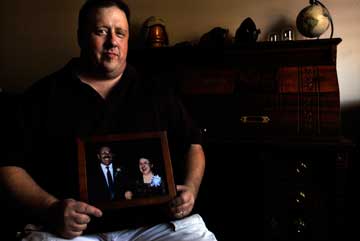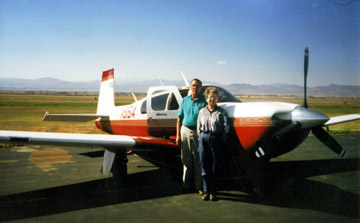Arizona Man Seeks Answer
to Parents' Deaths
After six years, Craig Kurtz still doesn’t know why his parents had to die.
He knows that his father, Jerome Kurtz, was flying his four-seater Mooney airplane and that his mother, Carolyn Kurtz, was a passenger. The couple, who had been married for 42 years, were enjoying retirement by flying to visit every state capital.
He knows the weather was slightly rainy as the couple tried landing in a small airport outside of Raleigh, N.C., on May 3, 2004. He knows that his father sounded disoriented while talking to the control tower about trying to come in for a landing and that his father made three passes at the runway.
The bodies of his parents were found in a nearby lake along with the remains of the plane. The plane had no black box recorder, meaning that even after a two-year investigation there were no definitive answers about why the plane went down. In the end, investigators listed the cause as pilot error.
“Pilot error is pretty much their catch phrase for saying, ‘We really don’t know what happened,’” Kurtz said during an interview at his Phoenix home in June.
Kurtz’s parents were flying under general aviation rules issued by the Federal Aviation Administration. Most small planes come under general aviation rules and are not required to have any kind of data recorders, even though they account for the lion’s share of all airplane accidents, said Jim Cash, a flight recorder specialist with the National Transportation Safety Board.
Larger commercial jetliners are required to have black boxes, and the NTSB is pushing for more sophisticated boxes – with video capacity – in commercial and charter planes. But its recommendation excludes piston-engine planes, which are often flown by hobbyists or personal fliers.
The number of registered general aviation aircraft that have piston engines outnumbers those with jet engines about 10-to-1, according to data provided by the FAA.
Kurtz thinks that perhaps his father suffered a small stroke, but that’s only a guess. It’s something he tries not to dwell on, but he can’t help thinking that if only he knew for sure he could better accept what happened.
“It happened on my older son’s sixth birthday,” Kurtz said. “A policeman knocked on the door, and I knew right away. I just knew they were gone. … You hear about commercial flights going down and their black box, but I just never thought it would happen to Mom and Dad.”
Sept. 26, 2010


 Resistance in the Cockpit
Resistance in the Cockpit
